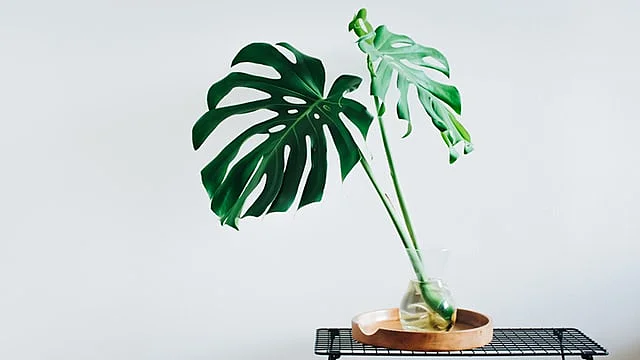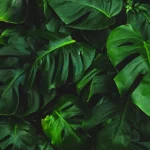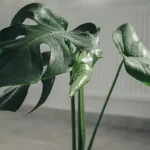The leaves of your Monstera are turning yellow? Don’t worry, you’re not alone. You’re probably wondering, can you save yellow Monstera leaves or will they just fall off one by one? The answer to this question is not as simple as you may think.
In this article, we will discuss yellow leaves on a Monstera plant and what can be done about it.
Table of Contents
Can you save yellow Monstera leaves?
I’d say no for the most part. Once a leaf begins to yellow, it will almost certainly become yellow and finally fall off.
Some leaves may recover from minor yellowing caused by nutrient insufficiency and become green again if the problem is corrected right away. While it is possible, don’t get too excited about it.
The first thing to do if you notice yellow leaves is to figure out if they’re yellowing throughout the plant or only at the bottom.
After that, you need to check the soil’s moisture content.
Remember:
- Wet soil and lower yellow leaves indicate that the plant has been overwatered and, maybe, has not received enough sunlight.
- Underwatering occurs when there are a lot of yellow leaves and the soil is dry.
- Check for lighting or nutrient shortages if you see yellow leaves all over the plant, even if the soil is okay.
- You don’t have to worry if you notice a yellowing lower leaf once in a while; your plant is shedding an old leaf.
Read More: Can a yellow Monstera leaf turn green again?
Black Spots on Yellow Leaves
It is likely your Monstera has root rot if the leaves are turning yellow and developing black spots. If you don’t act quickly, your plant will likely die.
To get rid of root rot, move your Monstera into new soil and into a new pot. Remove as much dirt as possible from the root ball and cut away any rotten roots. Check that the new soil and pot drain properly!
Once your plant has been repotted, move it to a location where it will get plenty of bright, indirect sunlight and water it less often than you would normally. When watered, the Root Supplement helps the roots recover and prevents additional infection.
The color and texture of your leaves make a big difference when they’re turning yellow and have brown spots.
If you see light brown, crispy, and dry spots on your plant, it is likely underwater and you should check to see if the soil is dry.
Dark brown and soft spots on the plant indicate root rot, so you should use the steps above to repot your plant as soon as possible.
It’s possible that you might have a bacterial infection if the spots are brown and on the dry side. Although it’s rare, it is something to consider!
If dryness and root rot have been ruled out, consider gently removing the afflicted leaves with clean hands and scissors and repotting the plant as you would for root rot. This should prevent the infection from spreading.
Read More: Why Does My Monstera Have Brown Spots?
Brown Edges on Yellow Leaves
Your Monstera may be suffering from a nutritional deficit if its leaves are yellow with crispy brown edges. Overuse of fertilizer may also cause chemical burns.
The simplest method to identify the difference is to note when you last fertilized. If you observe a white crust on the surface of the soil, it might be a sign that you overfertilized and all those minerals are accumulating in the soil.
Check the soil moisture to see whether the plant has been underwatered.
Read More: How do you get rid of yellow leaves on Monstera?
Why is my Monstera turning yellow?
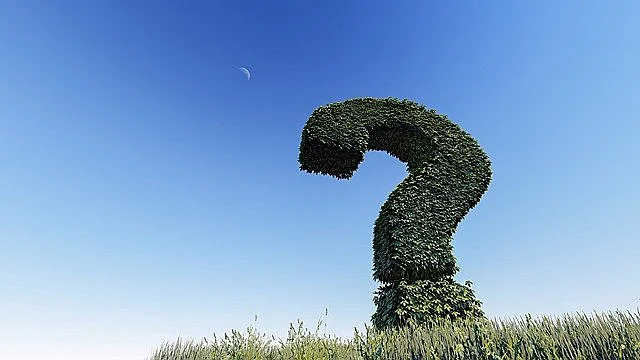
The yellowing of Monstera leaves may be caused by a variety of factors.
- Poor lighting
- high soil moisture
- low humidity
- insect infestations
- fungal infections
Insufficient lighting
Under bright light conditions, Monstera’s leaves are prone to yellowing. Although the plant can grow in low-light environments, the same thing might happen if there is insufficient light exposure.
By studying the yellowing pattern, you can tell if your Monstera leaf yellowing is caused by a lack of light. Instead of yellowing throughout the whole leaf, you’ll observe yellow spots or yellowing along the veins.
Read More: How do you fix yellow Monstera leaves?
Overwatering
Overwatering may also cause yellowing of Monstera leaves, which is an early indicator of root rot. The issue might be caused by over-watering your Monstera plant or growing it in poor-draining soil that holds extra moisture.
Simply sticking your finger into the soil will reveal whether or not your Monstera leaves are getting yellow as a result of excessive soil moisture. It’s probable that your Monstera is overhydrated if it feels damp, mushy, and has a rotten/funky odor.
Aside from yellowing leaves, an overwatered Monstera plant may seem drooping and have brown leaf marks.
Low humidity
Monstera is a tropical plant, and as such, it thrives in high-humidity environments. Your Monstera leaves will turn yellow if the local humidity drops below 60%.
Plants growing indoors are particularly prone to this problem since relative humidity is typically kept lower than that to make the home more comfortable.
Pest infestation
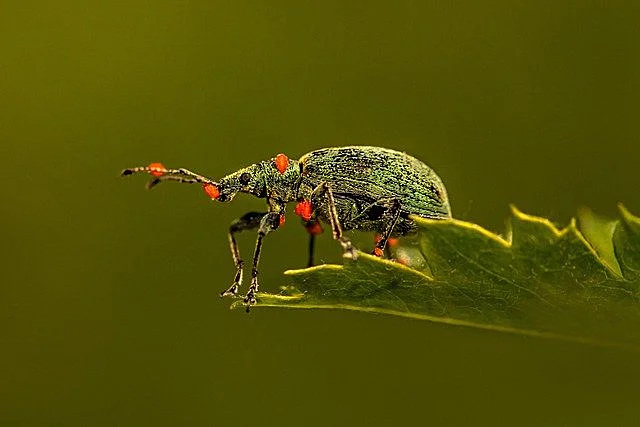
If you see yellow spots on your Monstera leaves, you may be dealing with a pest infestation. There are a number of pests that attack Monstera, including aphids, aphid flies and aphids.
- Scales: these small, brown insects drain the sap from Monstera leaves, turning them yellow and stunting the plant’s development.
- Spider mites: Monstera spider mites feed on the juice of the leaves and excrete honeydew that causes chlorosis (yellowing) of the foliage. They are so small that you can’t even see them.
- Mealybugs: these are white, crawling insects that feed on Monstera leaves’ sap, causing the leaves to yellow.
- Aphids: These bothersome pests, like spider mites, produce honeydew on Monstera leaves, preventing effective light absorption and causing leaf yellowing.
Read More: Should I cut off yellow monstera leaves?
Fungal Diseases
Monstera plants are very sensitive to fungal diseases such as fungus gnats, anthracnose, and powdery mildew. The larvae of fungus gnats are found in the soil, where they feed on the roots of Monstera plants.
When they cause considerable root damage, the plant is unable to adequately extract nutrients, oxygen, and water from the soil, resulting in leaf stress, yellowing, and withering.
Monstera leaves may be infected with anthracnose, a soil-borne fungal disease that forms brown-black spots with a yellow halo around each of them. Powdery mildew, on the other hand, only causes yellowing of Monstera leaves in the latter stages of infection.
Root Rot
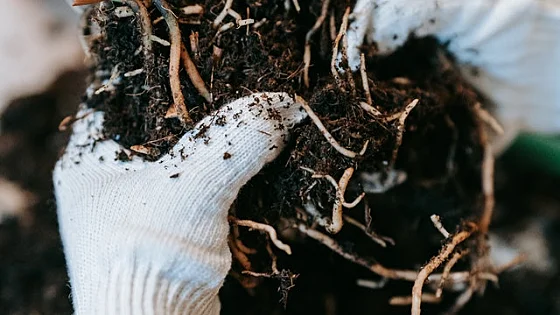
Root rot is more of a secondary than a major cause of Monstera leaf yellowing. The roots of your Monstera are prone to rot if the soil in which they grow is too dense or does not drain adequately. It’s also possible to have root rot if you overwater your Monstera.
Excessive moisture causes oxygen deficiency in the soil, leading to Monstera plant roots dying. As the roots wither away, the plant struggles to absorb nutrients, water, and oxygen, resulting in yellowing and wilting leaves.
To find out if your Monstera plant’s leaves are turning yellow because of root rot, remove it from the soil mix and look at its roots. Monstera roots that have gone bad have black, soggy, and decaying appearances.
Heat Stress
Due to the fact that Monsteras are native to the tropics, they are sensitive to excessively cold temperatures. When the temperature drops below 50 degrees Fahrenheit, you’ll see yellowing on your Monstera’s leaves.
During the winter season, it is not recommended to put your Monstera near cold, drafty windows.
Extremely high temperatures exceeding 85 degrees F will also cause the yellowing of Monstera leaves. So, don’t put your Monstera plants in direct sunlight or near any heaters. In general, younger, sensitive Monstera leaves are more susceptible to leaf yellowing induced by heat stress than older leaves.
Transplant Shock
Monstera leaf yellowing may also happen after repotting or moving the plant from a growth container to your garden. The reason for this is that the plant is suffering from repotting stress or transplant shock as a result of the rapid change in soil conditions or as a result of the roots being exposed for too long during repotting.
Your Monstera may attempt to adapt or react to the unexpected changes by saving water and nutrients, which will result in leaf yellowing. When a Monstera plant suffers from transplant shock, the oldest leaves are the first to turn yellow.
Take note that leaf yellowing caused by transplanting or repotting is typically just temporary, and your Monstera should return to its regular appearance within a few days after the transplant.
Nutrient Deficiency
If your Monstera plant doesn’t get enough nitrogen or potassium, its leaves may turn yellow. This isn’t very common, but it can happen. Chlorosis and stunted growth are two symptoms of a nitrogen deficit, which affects older leaves first.
In the meantime, your Monstera plant will transfer small potassium nutrients available to the younger leaves if there is a deficiency in potassium. As a consequence, the older foliage will be the first to turn yellow.
Overfertilization
Monstera plants flourish when nutrients are balanced. So, providing them with an excessive amount of fertilizer nutrients may also result in leaf yellowing. Reverse osmosis occurs when salts from surplus nutrients build up in the soil and pull water away from the Monstera roots.
It’s possible that overfertilizing might produce salt burn since it raises the soil’s acidity. If you detect a white fertilizer crust on top of the soil, if your plant is displaying indications of stunted growth, or if the yellowing is more prominent near the plant’s base, you may have over-fertilized your Monstera.
Conclusion
Can you save yellow Monstera leaves?
In my opinion, once a Monstera leaf has gone yellow, it is no longer beneficial to the plant and should therefore be removed.
Cut any yellow leaves you find on your plant using clean scissors, but be sure to assess the overall health of your plant to see if you have an issue that needs to be addressed or whether this is just regular, healthy leaf falling.
Read More: Will a yellow monstera leaf recover?
Pictures Used:
Photo by Michaela Zákopčaníková on Unsplash
Student photo created by wayhomestudio – www.freepik.com
Pixabay로부터 입수된 Erik Karits님의 이미지 입니다.
